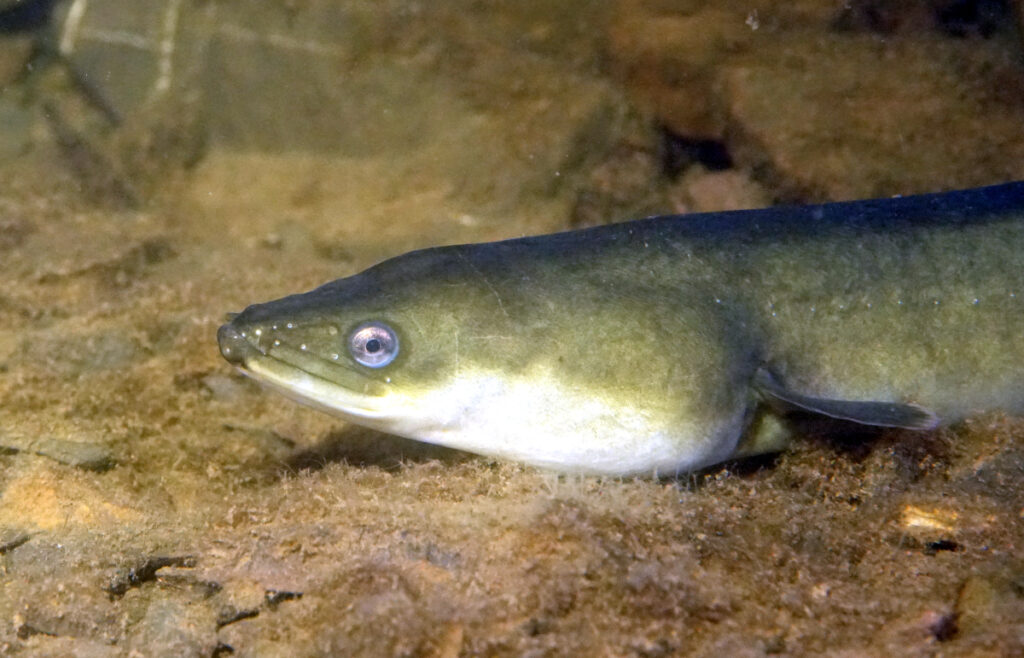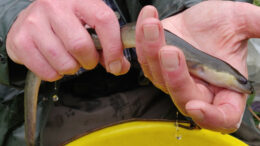This summer many media outlets smelled blood in the water and went on a feeding frenzy, publishing sensationalized reports about sharks getting high on cocaine off the coast of Florida.
The story originated with a Discovery Channel “Shark Week” program, which posited that odd, manic shark behavior observed off the Florida Keys originated after the predators consumed bales of cocaine dropped in the water by smugglers.
Shark scientists quickly debunked this theory by pointing out that sharks would only be attracted to cocaine if it smelled like meat, and that cocaine has never been found in wild sharks’ systems.
Still, the damage was done: The media had drummed up one more excuse to be afraid of sharks.
But cocaine in the water — that’s something we should still be afraid of. Only it’s not coming from bales of drugs dropped from the sky. It’s coming from human urine, the same way antidepressants and other pharmaceuticals end up in our sewers and waterways.
And it’s not causing the animals who consume it to get high or stoned. New research published in the journal Fishes reveals that this human-excreted cocaine could cause a host of health problems for wildlife — and people.
Cocaine’s a Hell of a Drug
To understand this potential threat, researchers looked to the critically endangered European eel (Anguilla anguilla), a species known to science for its usefulness in studying environmental pollutants.
“Eels are excellent biomonitors,” says Anna Capaldo, a biology professor at the University of Naples Federico II and the study’s senior author. “They are very sensitive to aquatic contaminants, live in the same place for many years, and have a large percentage of fat that promotes the accumulation of many contaminants. They also represent a source of food for humans.”

Eels regularly swim in waterways where cocaine has been detected, like the Thames River in London. Previous studies have detected the drug in eels’ systems, but Capaldo and her team wanted to find out exactly what that meant. They exposed young eels to levels of cocaine equivalent to those found in the environment (20 ng/L−1) for 30-50 days. (All experiments were conducted under ethical guidelines for animal experimentation.)
The result: The cocaine accumulated at various levels in — and caused damage to — the eels’ brains, muscles, livers, kidneys, digestive tracts, gills, skin, spleens and gonads.
“That cocaine could cause damage to a living organism, such as an eel, was somewhat predictable,” Capaldo says. “However, the fact that this damage was also induced by a chronic exposure to very low concentrations of cocaine (20 ng of cocaine per liter of water equals 20 billionths of a gram of cocaine per liter) surprised us.”
The study concluded that even this relatively low concentration of cocaine could put European eels further at risk in the wild. “[T]he alterations in nervous and endocrine systems, and in peripheral tissues, induced by cocaine, could decrease its ability to survive and its reproductive fitness,” the authors wrote. “Moreover, the presence of cocaine in the muscle, which is the edible part of the animal, can be a problem not only for the eel, which needs a healthy muscle to complete reproductive migration, but also for human consumption of this fish.”
As for the “Cocaine Shark” effect? That remains to be seen.
“Drugs are particularly dangerous because they affect mood and behavior of living organisms, and this in turn can interfere with their survival skills,” Capaldo says. “In this regard, there are many studies concerning the effects of antidepressants on behavior of aquatic fauna. The effects of cocaine on eels’ behavior are a topic that we’d like to explore with further studies.”
They also hope to repeat the study using more than one contaminant, so they can better understand the compound effect of multiple pollutants or drugs on animals’ health.
The eels in this study were actually lucky. They were weaned off the cocaine, and many of the health effects receded. But eels encountering illicit drugs in the wild would remain exposed to environmental cocaine throughout their time in a polluted habitat — a situation that’s likely to worsen as the world gets hotter.
The Climate-Cocaine Connection
Capaldo points out that pharmaceuticals and illicit drugs are just one threat to European eels; climate change poses a danger to all eel species across the world. But the two threats remain linked, as temperature fluctuations can cause chemical interactions to change and become more toxic.
“All these findings would suggest that climate change, and in particular the rise in temperatures, could pose a problem for eels’ survival,” she says.
Meanwhile the study cites research that points out how cocaine poses its own threat to the climate — and a major one, at that:
“It is estimated that 1982 tons of pure cocaine were produced in 2020, an increase of 11% over the previous year. The carbon footprint … of cocaine, related to cultivation of coca plants, processing of cocaine, disposal of waste generated in the manufacturing process and land-use change, is 4500 kg CO2e per kg of cocaine produced. Therefore, referring to the 2020 data, we obtain a mean value of the total emissions per year of 1.9 million tons of CO2e, a value significantly higher than that of other crops, as sugar cane or cocoa beans.”
And the problem is only going to get worse. Cocaine production increased another 35% between 2021 and 2022, according to a recent United Nations report. Meanwhile a commentary published this July in the Journal of Addiction Medicine predicts that climate change — and its resulting human suffering — will worsen the opioid epidemic and increase abuse of fentanyl, cocaine, and other legal and illegal stimulants.
Which just goes to show: It’s all connected.
“We are all linked by our environment,” says Dr. Emily Einstein, chief of the Science Policy Branch at the National Institute on Drug Abuse, who was not affiliated with either study. “The idea that the behaviors of humans end up in the water and impact our ecosystems and endangered species is an important one to keep in mind. Much like we share a water supply, we also share a drug supply. I think this idea that humanity is kind of linked by these shared resources is an important one to remember. We all have to care about each other, the impact we’re having on each other, and on our environment as well.”
Previously in The Revelator:
Endangered Wildlife Are Getting Dosed With Rat Poisons


